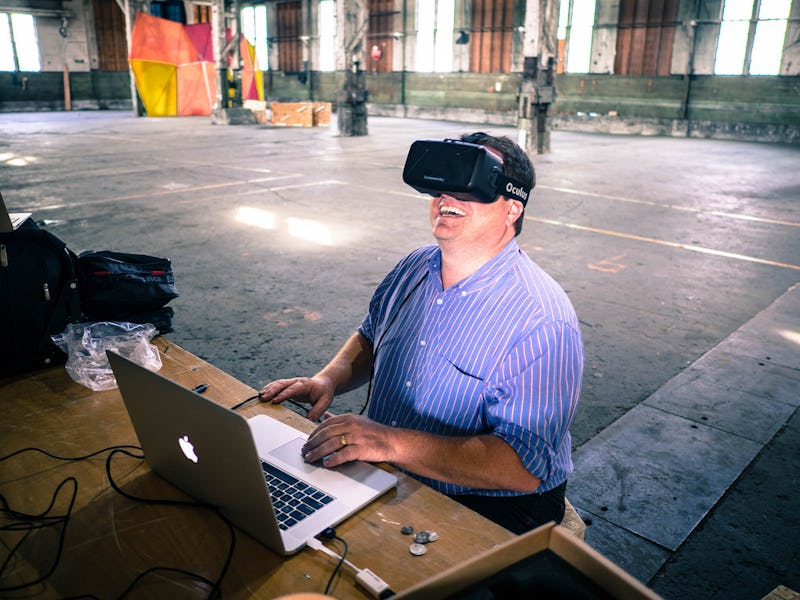Oculus Rift Won’t Try Augmented Reality, Because Headsets Look Ridiculous
Headset couture is an oxymoron.

The Oculus Rift’s dance card is full, and it has no time to tango with the real reality: In an interview with Wired, Oculus CEO Brendan Iribe picks apart the problems of augmented reality headsets, as opposed to the Rift’s breed of an invented virtual universe. Iribe raise technical limitations of marrying the physical and the virtual, accounting for factors like biological wobble — essentially, an AR headset has to contend with the tiny movements of our heads — but the problem is as much a cultural-cum-fashion issue as much any hardware limitation. Unless you’re trying to make a living as Iron Man in Times Square, we’re just not ready to stroll through the streets with big fucking pieces of plastic on our faces.
Take, for instance, Google, which recently claimed the Alphabet. Even that ballsy, bearded technology could not make augmented reality a thing, banishing Glass into the same island of forgotten toys, joining discards like Google Plus and the Facebook/Second Life hybrid Lively. Google Glass had an Orwellian Big Brother problem, but it also had the other big brother problem: You just sort of look like a dork with those things on your face all the time, dingus.
What’s stepping out of Google Glass’s shadow — Microsoft’s HoloLens and a host of smaller AR endeavors — is trying to get away from the you-need-to-always-wear-me sense of glasses. It’s a smart move. If augmented reality is a tool or game, just put on the headset to do your business, then fold-tuck it away and go about your day. Because we don’t serve your kind here, or at least not yet.
Oculus has the potential to go beyond gaming, if you ask Mark Zuckerberg. But the early launch is aimed squarely at gamers. Playing video games has become, from the view of where games are played, a solitary endeavor — Mario Kart and holdout LAN parties notwithstanding, multiplayer games are online. Playing games makes you look a little nuts — even if you’re in the same room, who’s watching the people hunched over keyboards or Xbox controller? The siren song of the screen is tough to resist. But to an observer, the AR and VR screens have ghosted. Bulky, blocky plastic goggles might be the hardback of the future — perfectly normal to slip into, introvert-style, even around company. But that’s still a long way off.
We’re face-focused creatures — evolution, eyes, and soul windows, etc. It would take a seismic cultural shift to overcome unlucky Time cover shoots, to get to the point where we’ve decided that wearing giant black goggles on your head, or even little glasses with winking lights, isn’t strange. Before we can slip on AR contact lenses or some sleekly unassuming glasses, we will spend some time in the Victorian age of headsets: Do it in the privacy of your own home.